MILITARY ART (1942-45)
During WWII, the Wartime Committee of the Society of Typographic Arts, an internationally renowned design organization, commissioned Gustav Rehberger to paint two murals for the “Bonds for Us, Bombs for Them" campaign (1942 – 1946) to encourage citizens to buy war bonds and stamps. Rehberger’s two murals “Labor – We produce” and “Transportation – We Deliver,” 25 square feet each, hung in the waiting room of Chicago's Union Station. Photographs of "Bonds for Us, Bombs for Them" taken by Jack Delano in 1943 can be seen at the Library of Congress:
Jump to Section: “Bond for Us, Bombs for Them”, “Soldier Art That Will Never Die”, "Judgement at Nuremberg", “Leaves from an Old Log", “Mistel Eins"
1942
"Bonds for Us, Bombs for Them"
"Labor - We Produce" - Size: 25 sq. ft. - Gustav Rehberger
"Transportation - We Deliver - Size: 25 sq. ft. - Gustav Rehberger
"Bonds for Us, Bombs for Them" - Chicago Daily Tribune - September. 15, 1942 War Bond Murals, Chicago Union Station
"Labor - We Produce" on display in Chicago's Union Station. Photograph by Jack Delano, Library of Congress.
Rehberger in his Army Air Force uniform working at his drafting table (1943-1945).
In June 1943, Rehberger was inducted into the US Army at Fort Custer, Michigan. He served as a Special Services Artist with the Fort Custer Illustrators. At the request of the WWII Illustrations and Format Branch, he was then dispatched to the Training Aids Division in New York City at the Hotel McAlpin on 34th Street for two and a half years.
FORT CUSTER – "An Austrian-born private who has been in the army only three weeks is producing paintings which Sidney Seeley, director of the famed Fort Custer army illustrators, terms 'military paintings that will never die.' Three of the works, all completed in little more than a week have been rushed to Chicago for inclusion in the army illustrators salon exhibit now hanging in the Art Institute there, Seeley said. The artist, Gustav Rehberger, 33, is a native of Riedlingsdorf Austria and has lived in this country 20 years with exception of a few months spent in his native country in 1937. In civilian life, according to Seeley, he engaged in advertising art and mural work. Two war murals were completed by Rehberger on the walls of the Union Station in Chicago shortly before he was drafted into the army and his work graces several of the Windy City’s larger churches."
“This young man’s contribution will be among the most important to military life from an art standpoint,” Seeley declared. "It possesses a dramatic quality we expect from military art. Without question, he is one of the best military artists we have.”
1943-45
"Soldier Art 'That Will Never Die'"
"Parachutist" - 1943-1945 - Training Aids Division, AAF, WWII Illustrations & Format Branch, NYC
Title Unknown, 1943-1945 - Training Aids Division, AAF, WWII Illustrations & Format Branch, NYC
Title Unknown, 1943-1945 - Training Aids Division, AAF, WWII Illustrations & Format Branch, NYC
Title Unknown, 1943-1945 - Training Aids Division, AAF, WWII Illustrations & Format Branch, NYC
Title Unknown, 1943-1945 - Training Aids Division, AAF, WWII Illustrations & Format Branch, NYC
Title Unknown, 1943-1945 - Training Aids Division, AAF, WWII Illustrations & Format Branch, NYC
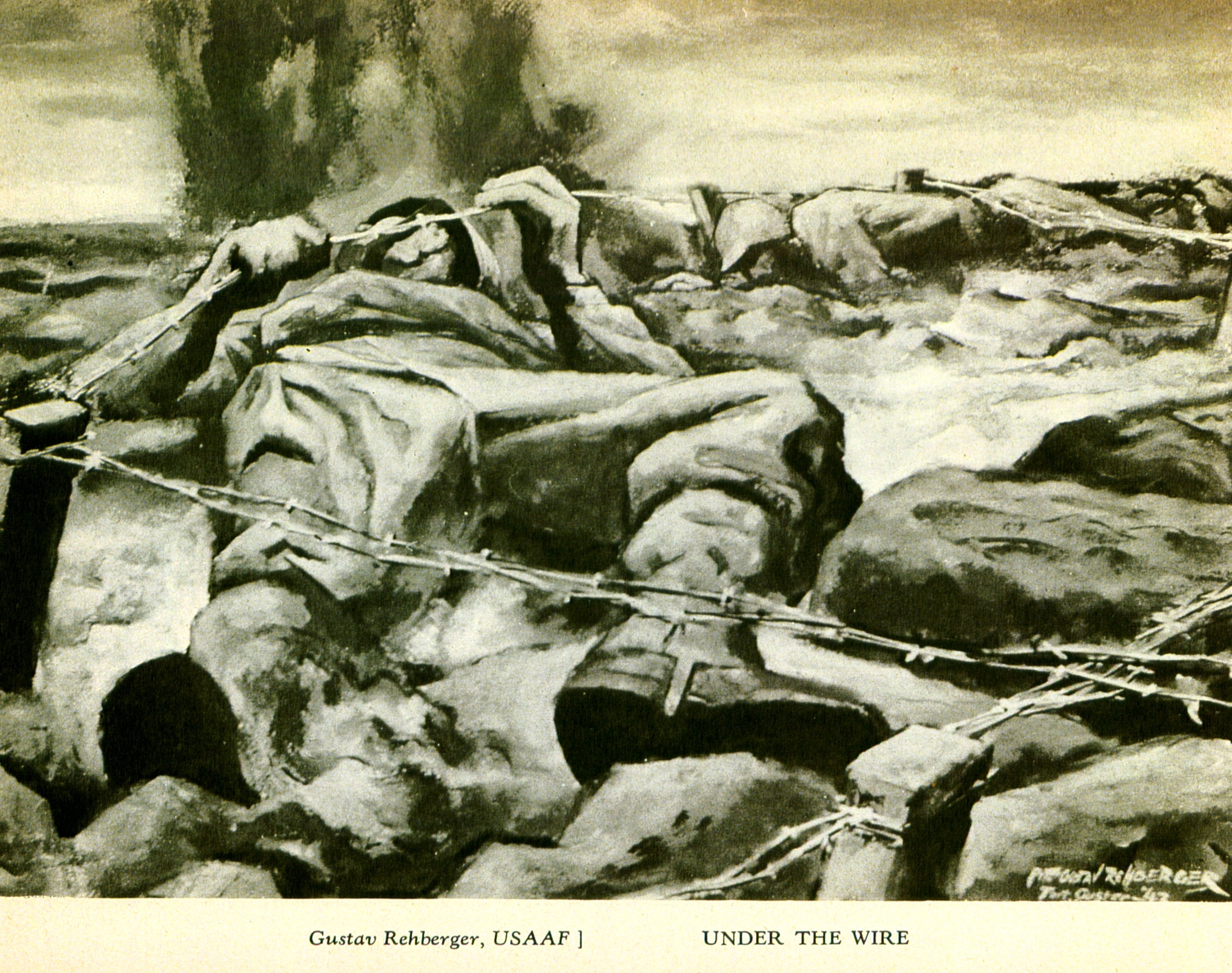

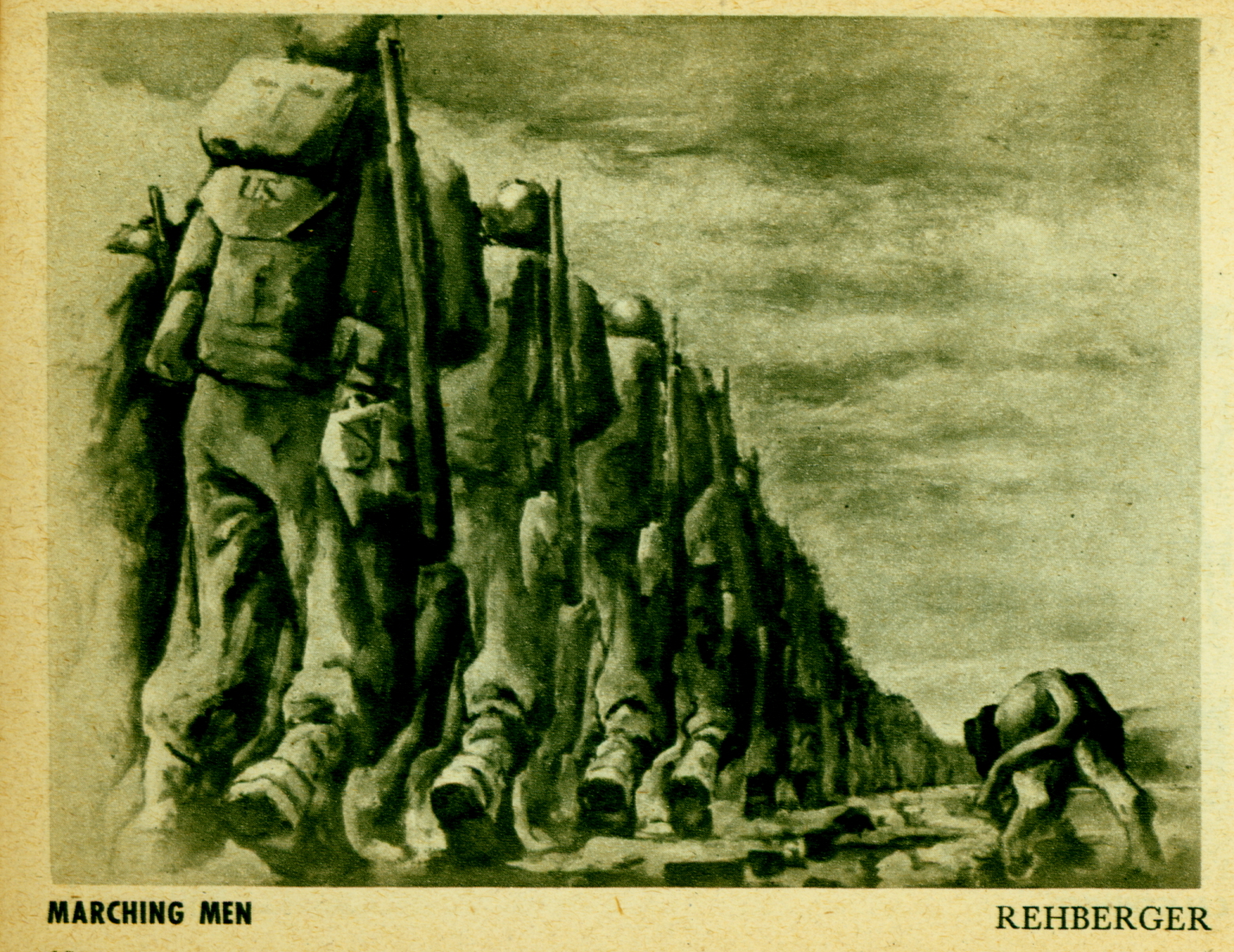
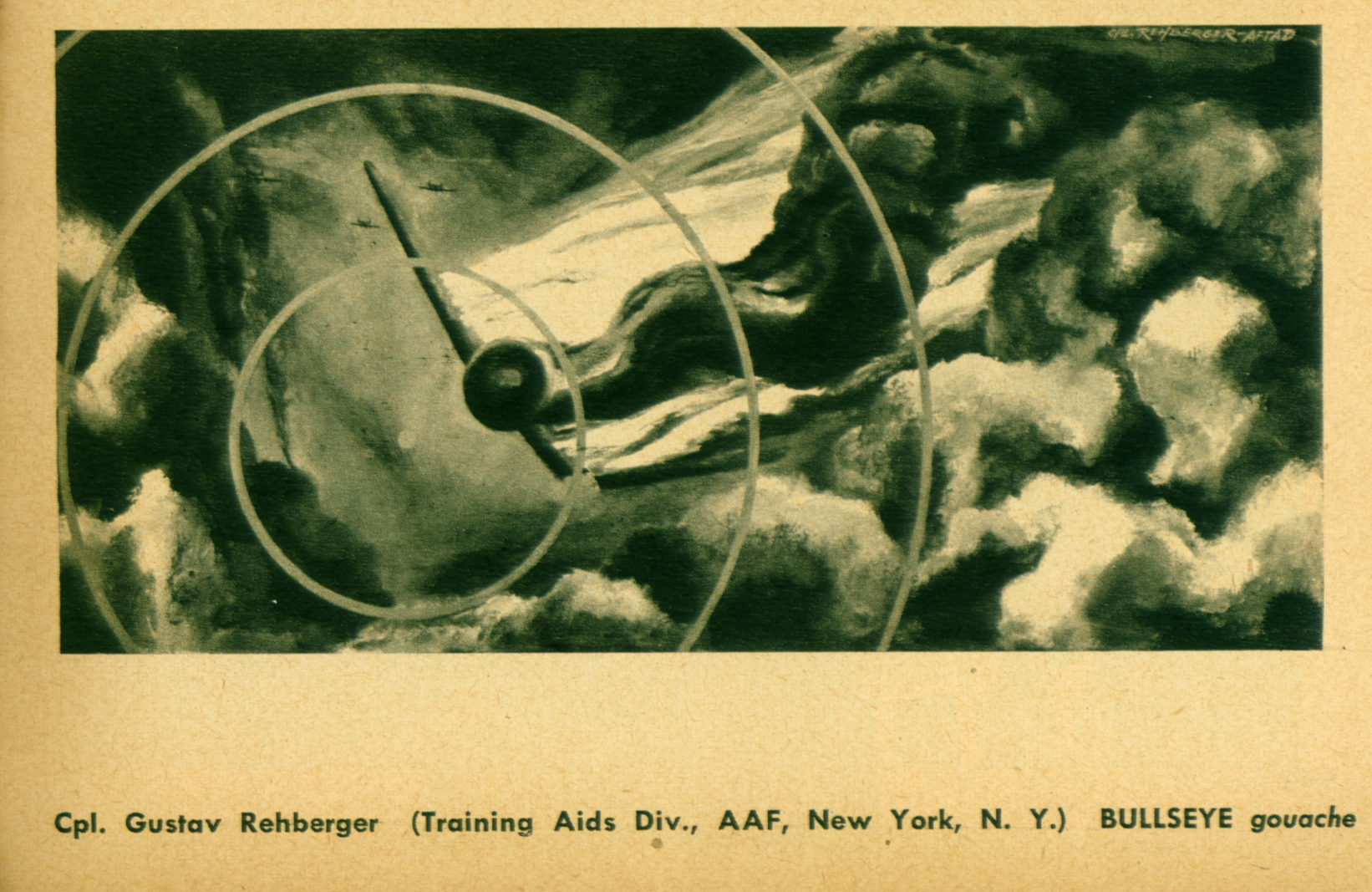
Helen Bower. "Soldier Art - That Will Never Die." Detroit Free Press, September. 4, 1943. Painting Titled, "Under the Wire" by Private Gustav Rehberger, Special Services Artist with the Fort Custer Illustrators.
“Judgement at Nuremberg”
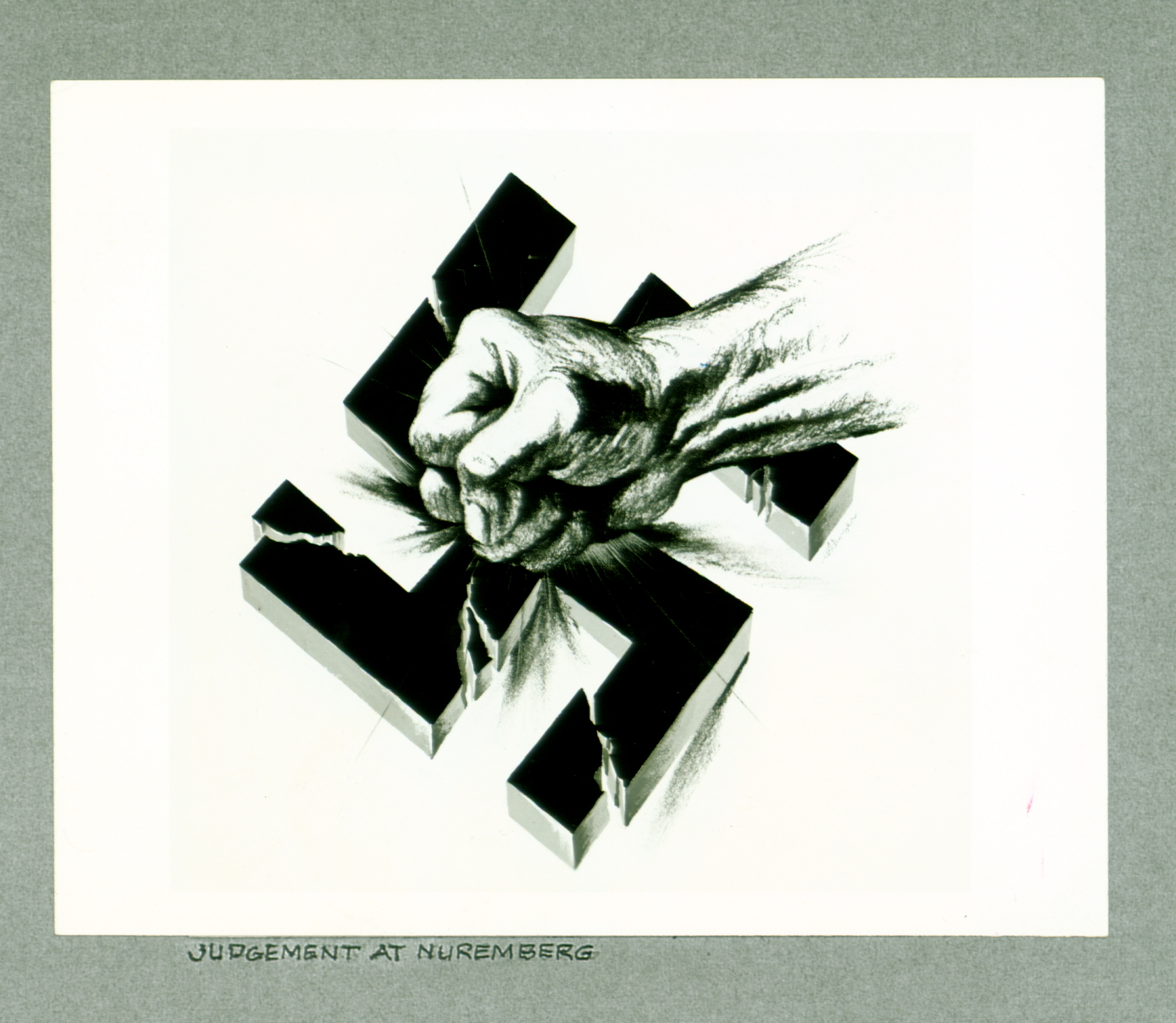
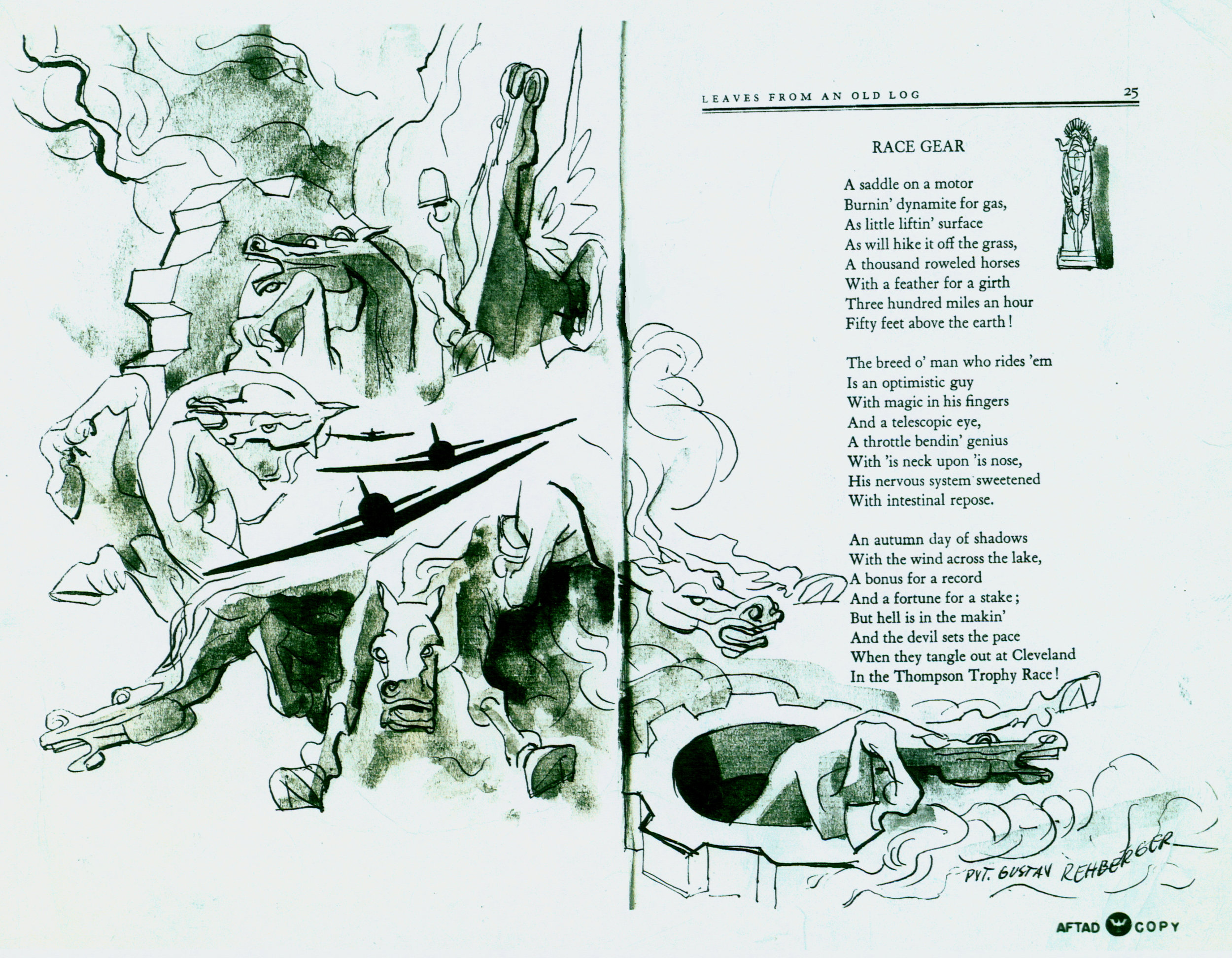
“Leaves from an Old Log”
Leaves from an Old Log by Gill Robb Wilson, 1943-1945
"Mistel Eins"
After WWII concluded, Rehberger created "Mistel Eins" (Mistletoe One) for an elaborate air show held at Wright Field (Wright-Patterson) Air Force Base in Dayton, Ohio. "Mistel Eins" was painted using captured German blue prints as there were no pictures of them at the time. Mistels were unmanned components of a composite aircraft configuration developed by the German Luftwaffe during the later stages of World War II. The crew compartment was replaced by a specially designed nose filled with a large load of explosives. The combination would be flown to its target by a pilot in the fighter. The unmanned bomber was released to hit its target and explode, leaving the fighter free to return to base.
"Mistel Eins" (Mistletoe One), 1945 (Pastel, 38 x 29.5 in.)
AFTER THE WAr
In a letter to Ballantine & Company dated June 9, 1945, Lt. Colonel Jesse N. Mason, Chief of the Illustrations and Format Branch of the Training Aids Division of the Army Air Forces had this to say about Gustav Rehberger.
"It is rather unusual to find an artist who can run the gamut of layout, lettering, design and illustration for commercial, industrial, advertising and SERVICE uses; and in addition hold his own with all comers in the fine arts but such is the caliber of this particular craftsman. It may be noted in passing that the 6th Service Command has entered a series of paintings made during Rehberger's early days with the Army at Fort Custer a number of these were exhibited at the National Galleries in London last year.
This distinguished artist not only covers the above mentioned fields but still seems to find time to experiment and apply mediums that heretofore have never been used in Service Training Illustrations.
In conclusion it may be said that not only has he achieved outstanding success in civil life but his contribution to the Army Air Forces has been one that has helped guide the destiny of thousands of men who he will never know or meet."



